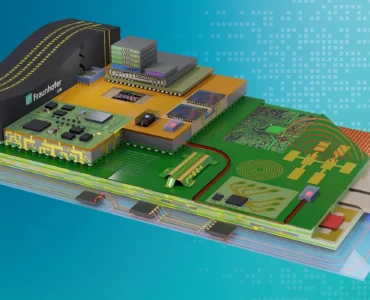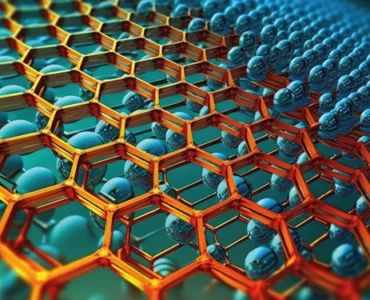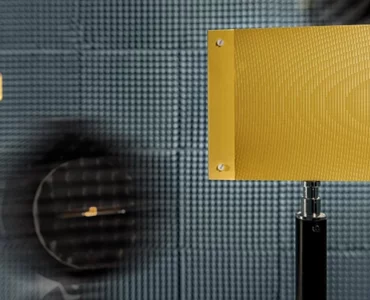Driven by curiosity and the spirit of discovery, Adam Rumjahn founded his own start-up: Orion AM. His vision is to use industrial additive manufacturing for advanced applications, using aerospace-grade polymers.
3D printing with these super-plastics is a revolutionary prospect for the aerospace, medical, automotive and semiconductor industries. Adam tells RealIZM about his history, current status, and future goals.
Would you like to start by telling us a bit about your start-up?
Orion AM: My start-up is called Orion AM. We focus on additive manufacturing with high performance polymers. High performance polymers are highly strong, highly heat and chemical resistant thermoplastics that are typically used in aerospace or in medical applications. Some of these plastics are very difficult to 3D print with, so we developed a special technology to make them more amenable to printing.
We are using a method similar to FDM, which relies on using filament. The difference is that we apply thermal radiation in order to improve the entire bonding strength, because it is the high-strength properties of these materials that makes them so desirable. Our technology is currently under development, and we hope to start commercializing our product in early 2020.
There are different types of 3D printers. Why are you using a method based on FDM?
Orion AM: That is a very good question, because we also had other options for printing with PEEK. The so-called SLS method (Selective Laser Sintering) can also be used, but there is a huge difference in costs. With every single printing process using the SLS method, you also produce a relatively huge amount of waste. Since the PEEK raw material is very expensive, the products would be getting much less affordable if we waste more during the printing itself.
Another reason is that there are a few other polymers which are very similar to PEEK, but they cannot be processed in an SLS printer. So, you have a greater choice of raw materials for FDM printers.
Which electronic components are you including in your 3D-printer?
Orion AM: I think the most important part of our printer in terms of electronics is the microcontroller, which is like the brain of our printer. It is customized, and we are looking forward to developing even better ones with IZM´s Start-a-Factory program.
Do you have a USP that really distinguishes you from other companies?
Orion AM: Our USP is being able to produce high-performance polymer products with ‘superior isotropic strength’, as we like to call it. 3D printing by way of FDM technology typically happens layer by layer. Then you have the problem that layers have to cool down, which breaks the seamless connection between the layers. To gain an isotropic strength – which means that the strength is uniform in every direction – we apply thermal radiation. That is how we achieve homogenous consistency and much better layer fusion.
Can you tell me more about possible applications in the aerospace world?
Orion AM: One of the applications we are most excited about are Cubesats. Cubesats are pico-satellites which are only about 10 cubic centimeters small. They are used for scientific as well as commercial purposes, like communication or surveillance. The costs for the launch of a cubesat are somewhere between 100 and 150 thousand euros. You typically have to pay around 40 thousand euros per kilo, and the weight is usually about 4 kilogram.
By using high-performance polymers in 3D printing, we can drastically reduce the weight of these cubesats and save a lot of money in the bargain. It is the perfect application because cubesats are usually highly customized. Right now, we are only focusing on the plastic parts of these small satellites, but there are also studies about printing entire cubesats.
What about medical applications?
Orion AM: The polymer that we are most focused on is called PEEK. It is the strongest of the high performance polymers, but it also has many other great properties. It melts at 340°C and has extremely high strength, comparable to pure titanium. On top of that, it is biocompatible. It has already been used over the last 23 years to replace titanium cranial implants, because it is cheaper and lighter. It is not a metal, which means that it does not create artifacts when a patient is examined under an x-ray. That makes it actually easier for doctors to analyze their patients’ recovery process.
Additionally, we found out about another property of PEEK through a friend of ours who recently underwent a surgery for removing a tumor on her brain. She was in need of an implant, and the doctor has given her the choice between titanium and PEEK. She chose PEEK, because titanium interacts with the temperature around you, which means it gets very cold during winter. The cold causes headaches for patients. PEEK does not absorb temperature in this way, which is much more comfortable for the patient.
Do you want to enter the automotive market?
Orion AM: It is an interesting market, but it is also different to the others because the manufacturing usually needs to happen in large batches. Anyway, with the increasing demand for batteries for electric vehicles, there might be some applications we can improve with our technology. In batteries, for example, you need a substrate or an insulation layer between the conductive elements. PEEK – beyond having great mechanical properties – also has great electrical properties, which might lead to more applications in this area.
Which phase of development are you currently at?
Orion AM: We are finishing our development work right now, and we will start commercializing in early 2020. By then, we will be able to produce all kinds of applications for different customers, since we are using the same technology, the same 3D printer, for all products.
Currently, we are working on two prototypes in Start-a-Factory, but we are already in contact with clients who are interested in our work, like the Charité hospital in Berlin.
How exactly are you collaborating with the Charité?
Orion AM: I would call it a beta test. They see potential in our technology for dental implants made from PEEK, and we would like to find a solution together. A researcher from Charité has come and visited me here at Fraunhofer IZM, and we worked together to make the very first dental implants from PEEK.
Where do you see the future of this technology in 5 to 10 years?
Orion AM: That is a tough question. So far, FDM printers have essentially been used to produce prototypes. Our technology makes us believe that we can get more into end user applications. Of course, we are not talking about high volumes, such as producing thousands of parts for automotive clients, but definitely applications like implants or cubesats.
We would also like to see an improvement in the overall quality of the parts over the next 5 to 10 years, because FDM is not exactly known for having the best surface finish.
Around 10 years ago, there was a big hype about 3D printing. Why is it still relegated to niche applications?
Orion AM: Yes, the trend has lost some steam over the last few years – especially in the consumer market. Still, 3D printing is getting more and more into focus of actual industry. This is where I can see 3D printing being used most. It has become less expensive and more accessible over the years. This accessibility makes it more attractive for industry users to be able to experiment without shouldering too many risks. I think, now, with the great potential in the industrial market, things are getting more interesting for us, because we are able to use these high-performance materials.
Why did you decide to work in this field?
Orion AM: I come from a mechanical engineering background and I always really loved to design machinery. I really like the process of creating something and sharing it with others. By getting involved in designing my own 3D printers, I feel like I’m passing this ability on to others and enabling them to create something themselves and, in turn, sharing it with the rest of the world.
What was the greatest success for your start-up so far?
Orion AM: I think the greatest success so far and the most exciting event was the moment when we tried the first printing process with the thermal radiation technology I mentioned. We actually achieved a very homogenous structure! That was when we validated our theory, and then we knew that we were on the right path.
How are you working with Fraunhofer IZM?
Orion AM: Primarily, our collaboration with IZM means knowledge sharing. We are working together with some IZM groups that are specialized on the micro-integration of sensors. We are also using synergies with other IZM groups that are interested in 3D printing for flexible or printable electronics. There is a lot of contact between everyone, which makes for a great community with the other start-ups here.
This interview was conducted by Yulia Fedorovich and edited by Marieke Lienert at Fraunhofer IZM Marketing & Business Development.





Thank you. Feel free to subscribe to our newsletter!
I’m truly enjoying the design and layout of your
site. It’s a very easy on the eyes which makes it much more
pleasant for me to come here and visit more often. Did you hire out a designer to create your theme?
Outstanding work!
I will immediately {take
Thanks.|
Great article.